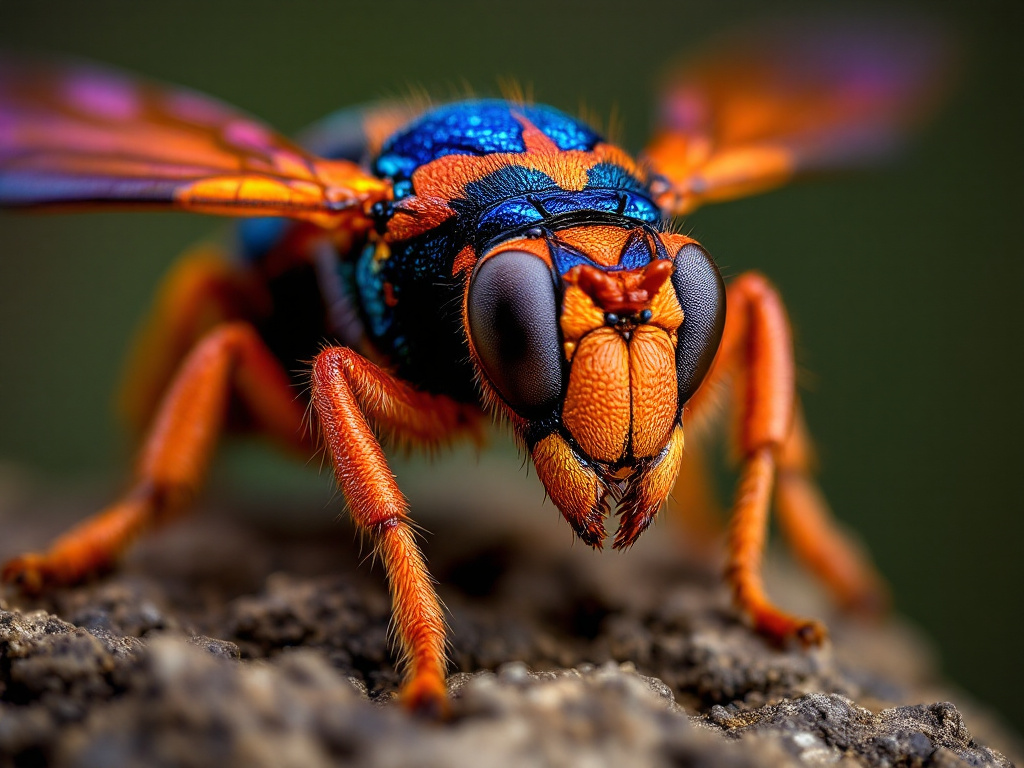Image generated by flux-ai.io & content generated by ChatGPT Version 4o-mini
Discovering the Rusty Spider Wasp: A Unique Hunter in Monroe County
Residents of Monroe County might be familiar with the beautiful sights of our local flora and fauna, but there’s an intriguing insect that could bring a new level of interest to your backyard: the rusty spider wasp, scientifically known as Tachypompilus ferrugineus. This large, striking wasp is not just a pretty face; it plays a fascinating role in our ecosystem.
What is the Rusty Spider Wasp?
The rusty spider wasp is easily recognizable. It has a reddish-orange body and iridescent blue to violet wings that shimmer in the sunlight. These wasps can be seen buzzing around during the warmer months, from mid-June to late August, searching for prey. What makes them particularly unique is their diet: they specialize in hunting large spiders, which they capture, paralyze, and use as food for their young.
Imagine the rusty spider wasp as a tiny superhero of the insect world, bravely dragging its much larger spider prey back to its nest. This behavior can often be observed in gardens and parks, making it a potential highlight for nature enthusiasts in Monroe County.
Life Cycle and Nesting Habits
The female rusty spider wasp digs a small nest in the ground, usually under vegetation or debris for protection. After capturing a spider, she places it in her nest, attaches an egg to it, and then covers the nest with soil. This ensures her larvae will have a ready meal once they hatch. Each female wasp typically builds multiple nests, providing a safe home for her growing young.
For our local residents, understanding these nesting habits can be beneficial. If you notice these wasps in your garden, remember that they are not aggressive towards humans and can actually help control spider populations around your home without the need for pesticides, which can harm beneficial insects. Instead of resorting to chemical controls, observe how these wasps contribute to a natural balance in your yard.
Why Should Monroe County Residents Care?
While the rusty spider wasp might seem intimidating due to its size and hunting skills, it poses little threat to people. Unlike their more aggressive relatives, these solitary wasps are focused solely on their life cycle: mating, nesting, and hunting. In a county where many residents enjoy outdoor activities and gardening, having these wasps around can be quite advantageous. They help maintain a balance in the ecosystem by controlling spider populations, which can sometimes become overwhelming.
A Call for Awareness
As Monroe County continues to grow, so does the importance of understanding and appreciating our local wildlife. The rusty spider wasp is a prime example of how nature works in intricate ways that benefit us all. By observing and respecting these wasps, we can enhance our appreciation for the biodiversity in our backyards and foster an environment that encourages various forms of life.
In summary, the rusty spider wasp is not just another insect; it is a key player in our local ecosystem. So the next time you see one of these remarkable wasps in your garden or while exploring the beautiful natural areas of Monroe County, take a moment to appreciate the important role it plays in our environment. With every wasp, there’s a story of survival, adaptation, and balance in nature that enriches our community.
References
EENY-5727/IN1247: Rusty Spider Wasp (suggested common name) Tachypompilus ferrugineus (Say) (Insecta: Hymenoptera: Pompilidae: Pompilinae). (n.d.). Ask IFAS – Powered by EDIS. https://edis.ifas.ufl.edu/publication/IN1247

